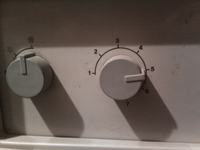Hello . I have a problem with the radiators at home. Recently I found out that there is air in them and they do not heat properly, i.e. they are cold at the top, which makes it cool in the house. I found instructions on how to bleed them (I don't know anything about it at all). I bled them by unscrewing the screws with a flat screwdriver in the upper corner of the radiator. In two of them you could hear the air escaping and water started flowing and now they are fully heated. However, in the next two, after completely unscrewing the screws, neither air nor a drop of water came out, and after turning on the heating, you can clearly hear the sound of water flowing inside. What else can I do? Is it possible that the vent hole is clogged inside? It seems to me that no one in this apartment has vented the radiators for a long time. Thanks for the help in advance




